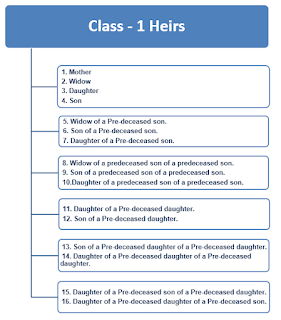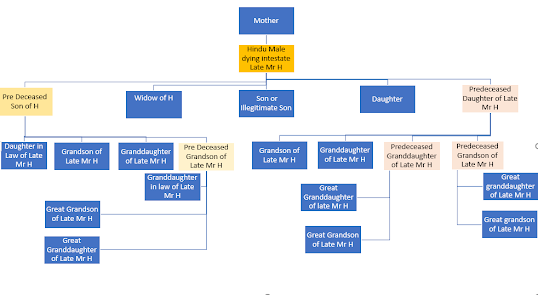Rights Issue of Shares
In an earlier article we have seen what a Bonus Issue of Shares is. In the current article we try to understand about Rights Issue of Shares.
One of the dictionary definition of the word Right is “legal entitlement to have”. When a person by virtue of his situation at a given point of time is entitled to something that “something” is called his right. Hence, we have Right to Freedom, Right to Equality, Right to information, Right to Property, Right to Privacy, Right to Constitutional remedies, etc.
In a capital market terminology “Rights issue of shares” means an existing company offering additional shares to its existing shareholders. This additional share offer is proportional to the shareholders current holding in the company.
The purpose of this article is only to give a basic idea. Readers are requested to refer to the Companies Act and other related law to understand the exact legal provisions.
Why this is called Rights? Or how this become a shareholders’ Right?
We know that shareholders are the ultimate owners of a company. When an investor purchases shares of a company from the share market or from the company or its promoters directly, what he actually buys is a portion of ownership capital of that company.
When the company requires additional funds to expand its business or for any other business purposes, it could raise such funds either by borrowing it from banks or financial institutions or from its owners. If the company decides to raise this additional capital from its owners, such owners would prefer to contribute the funds in the ratio of their ownership. They would want the ownership pattern / ratio of capital owned in the company to remain the same even after the new funds are pumped in. The offer of shares to the shareholders is therefore always in proportion to their existing holding, so that even after the new capital has been raised the original shareholding pattern remains the same.
Normally in a Rights issue, shares are offered at a discount to market price. This acts as an incentive to the existing shareholders to subscribe to their share.
It may sometimes happen that the existing shareholders may not have money with them to invest in their rights, or they may not want to commit additional funds in the company. In which case they have got an option to surrender or relinquish their “rights” by not subscribing to their shares or they can “renounce” the same in favour of another person for a price. This price is normally the difference between the issue price and the market price. In such a situation the ownership of this shareholder after the rights issue will reduce proportionately.
Let us understand this with a simple example.
Suppose A Ltd has a capital of Rs 20,000/- which was contributed by 5 shareholders equally when A Ltd started its business. This means each shareholder / owner has Rs 4,000/- worth of shares in the company.
A Ltd has now identified a new business-opportunity and requires another Rs 15,000/- worth of funds to invest in this new project. A Ltd has the option to raise this additional amount either from banks or financial institutions or it can raise this amount from its owners, i.e its 5 shareholders.
As an owner of A Ltd, it is now the Right of each of the 5 share holders to participate equally in the new fund-raising program of the company. If all the shareholders participate in this fund-raising and contribute their share fully i.e. Rs 3,000/- each, the new combined capital would be Rs 35,000/- (20000+15000) which would be held by each of the share holders to the extent of Rs 7,000/- (4000+3000) each.
|
|
OLD |
OLD |
NEW |
NEW |
|
1 |
20% |
Rs 4,000 |
20% |
Rs 7,000 |
|
2 |
20% |
Rs 4,000 |
20% |
Rs 7,000 |
|
3 |
20% |
Rs 4,000 |
20% |
Rs 7,000 |
|
4 |
20% |
Rs 4,000 |
20% |
Rs 7,000 |
|
5 |
20% |
Rs 4,000 |
20% |
Rs 7,000 |
|
TOTAL |
100% |
Rs 20,000 |
100% |
Rs 35,000 |
If one of the share holders is not interested or is not in a position to contribute his share of Rs 3,000/- either fully or partially, he can renounce his share in favour of his co-owners who can subscribe to his share and increase their holding in the company. Assuming all the remaining shareholders subscribe to the renounced share equally the new share holding pattern would become 4 shareholders holding Rs 7,750/- each (4000+3000+750) and one shareholder who has not participated in the rights issue holding Rs 4,000/-.
The old share-holding ratio was 20% * 5 = 100% i.e. Rs 4,000 * 5 = Rs 20,000 and the new share-holding ratio would be (22.145%*4)+(11.42%*1)=100% i.e. Rs 7,750*4 = Rs 31,000 PLUS Rs 4,000*1 = Rs 4,000 totaling to Rs 35,000.
|
|
OLD |
OLD |
NEW |
NEW |
|
1 |
20% |
Rs 4,000 |
11.420% |
Rs 4,000 |
|
2 |
20% |
Rs 4,000 |
22.145% |
Rs 7,750 |
|
3 |
20% |
Rs 4,000 |
22.145% |
Rs 7,750 |
|
4 |
20% |
Rs 4,000 |
22.145% |
Rs 7,750 |
|
5 |
20% |
Rs 4,000 |
22.145% |
Rs 7,750 |
|
TOTAL |
100% |
Rs 20,000 |
100% |
Rs 35,000 |
In the second case Shareholder No 1 has renounced his share in favour of the other shareholders who have all subscribed to the renounced shares in equal proportion. In case of listed companies, the shareholder has got the option to either fully or partially apply for the additional shares offered to him. Or fully or partially renounce the shares either in favour of existing shareholders or in favour of any member of the general public who can also become members of the company after they are allotted the renounced shares.




